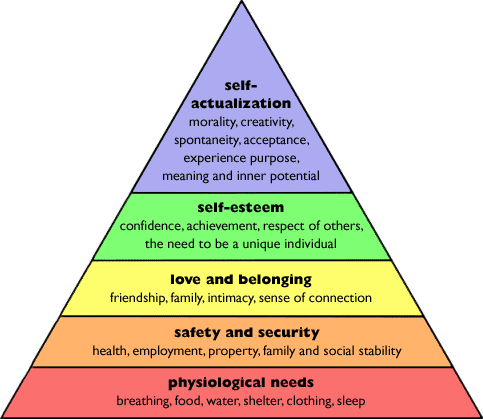well, guess what--- your teachers felt the same way. i should already be getting ready for the first day back after this much appreciated, much-needed, cherished mid-winter break but as i plan my return to school i am remembering a conversation i had this break about maslow's pyramid of needs (see photo). very often i get caught up in the higher end of this pyramid with my students. because i can assume (for the most part) that my students are steadily receiving food, water, shelter and clothing i am free to begin fulfilling higher-ordered needs. this is not the case everywhere. here in nyc 16,000 children are homeless. SIXTEEN THOUSAND! the challenge i face is how to make my six year olds aware of this. how to turn them into good citizens without deflating their natural bubbly, hopeful, sweet and innocent personalities. ideas welcome.



Hey Dana, you definitely raise a good question up about developing the sense of social responsibility and awareness at an early age in a child's life, but how to do it without overwhelming them. I don't think addressing the issues macroscopically is necessarily effective, for example tactfully telling you students about the 16,000 children in NYC, because I believe that, psychologically, children aren't as capable of empathizing with others as effectively if the problem doesn't relate to them personally. (granted there are some people our age who can't either, but...=D) I tend to show them through having them experience it through a social "model" if you will. For example, develop a "sticker economy" system where students can get prizes using the stickers available, and show favoritism for a couple days to a certain group of students. When the kids begin to protest or definitely feel a sense of displacement in the classroom, take away the stickers and level the playing field. Ask them how they felt. And after a certain point when the kids have forgotten about the situation altogether, you can try it again with a different group. I've tried this on my kids at one point, and whether or not they get the concept entirely is beyond me, but I definitely see some impact on the way they behave in class. I definitely see more empathy between the students.
ReplyDelete